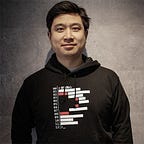5.2 Basic Concepts in C# Relevant to Blockchain Development
Part of “Mastering Blockchain Technology with C#: From Concepts to Implementation”
In this section, 5.2 “Basic Concepts in C# Relevant to Blockchain Development,” we will cover the fundamental C# programming concepts that are essential for developing a Blockchain. Understanding these concepts is crucial for effectively implementing the various components of a Blockchain system.
Key C# Concepts for Blockchain
- Classes and Objects:
- Blockchain development involves creating classes to represent different components like a block, blockchain, wallet, etc.
- Example:
public class Block {
public int Index { get; set; }
public DateTime TimeStamp { get; set; }
public string PreviousHash { get; set; }
public string Hash { get; set; }
public string Data { get; set; }
// Constructor and other methods...
}- Methods and Properties:
- Methods for functionality like adding a block, validating the chain, etc.
- Properties to hold data such as transaction details, hashes, etc.
- Example: Methods in the
Blockclass for calculating the hash.
- Immutability:
- In Blockchain, once data is written, it should not be changed. This can be implemented in C# using read-only properties or private setters.
- Example: Setting properties of a block only in the constructor.
- Cryptography:
- Utilizing the
System.Security.Cryptographynamespace for hashing and other cryptographic operations. - Example: Generating a hash for a block.
using System.Security.Cryptography;
using System.Text;
public string CalculateHash() {
using (SHA256 sha256 = SHA256.Create())
{
string rawData = $"{Index}{TimeStamp}{PreviousHash}{Data}";
byte[] bytes = sha256.ComputeHash(Encoding.UTF8.GetBytes(rawData));
return BitConverter.ToString(bytes).Replace("-", "").ToLower();
}
}- Collections:
- Using collections like
List<T>to manage multiple blocks in a chain. - Example: Storing blocks in a
List<Block>.
- LINQ (Language Integrated Query):
- Useful for querying data within your Blockchain, like finding a specific block or transaction.
- Example: Querying a block with a specific hash.
- Exception Handling:
- Managing errors and exceptions is critical, especially when dealing with transactions and cryptographic operations.
- Example: Try-catch blocks for error handling.
- Asynchronous Programming:
- Important for handling long-running operations like mining or network communication.
- Example:
asyncandawaitfor asynchronous methods.
By mastering these C# concepts, you will be well-equipped to handle the programming challenges of Blockchain development. You’ll understand how to structure your Blockchain, implement security through cryptography, and manage the data flow within your application.
In the upcoming sections, we will build on these fundamentals to start creating the different components of our Blockchain in C#.
